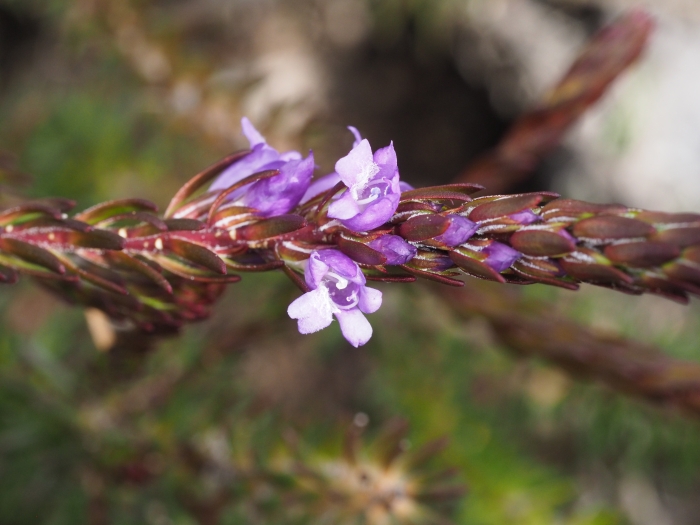Emu Bush
(Eremophila densifolia)
Emu Bush (Eremophila densifolia)
/
/

Geoff Derrin
CC BY-SA 4.0
Image By:
Geoff Derrin
Recorded By:
Copyright:
CC BY-SA 4.0
Copyright Notice:
Photo by: Geoff Derrin | License Type: CC BY-SA 4.0 | License URL: https://creativecommons.org/licenses/by-sa/4.0 | Uploader: Gderrin | Publisher: Wikimedia Commons | Title: Eremophila_densifolia_(leaves_and_flowers).jpg | Notes: Preparing upload using [[User:Flickr upload bot|Flickr upload bot]] |




Estimated Native Range
Summary
Eremophila densifolia, commonly known as Emu Bush, is an evergreen shrub native to the arid inland regions and plains of Southwestern Australia, where it thrives in a range of habitats including mallee, mulga communities, and dry sclerophyll forests. This resilient plant typically grows to 0.3–0.5 m (1–2 ft) high and about 0.7 m (2 ft) wide, but some forms can reach up to 1.8 m (6 ft) in height. Emu Bush is characterized by its dense foliage and striking flowers, which have a purple to lilac-colored petal tube on the outside and white with purple spots on the inside. The petal tube is mostly glabrous, with long, soft hairs on the lower petal lobe and inside the tube. The flowers, which enclose 4 stamens, vary in flowering time across subspecies and are followed by dry, oval-shaped fruits measuring 2.5–3 mm (0.1–0.1 in) long.
Emu Bush is valued for its drought tolerance, frost hardiness, and the beautiful contrast between its foliage and flowers, making it an excellent choice for water-wise gardens, rockeries, and as a container plant. It is often used as a low-growing shrub in garden beds or as a ground cover. Eremophila densifolia is easy to propagate from cuttings and adapts to a variety of soils, including those that are less fertile. It performs best in full sun to part shade and requires minimal watering once established, making it a low-maintenance option for gardeners. While it is generally pest-resistant, it can occasionally suffer from root rot in poorly drained soils.CC BY-SA 4.0
Emu Bush is valued for its drought tolerance, frost hardiness, and the beautiful contrast between its foliage and flowers, making it an excellent choice for water-wise gardens, rockeries, and as a container plant. It is often used as a low-growing shrub in garden beds or as a ground cover. Eremophila densifolia is easy to propagate from cuttings and adapts to a variety of soils, including those that are less fertile. It performs best in full sun to part shade and requires minimal watering once established, making it a low-maintenance option for gardeners. While it is generally pest-resistant, it can occasionally suffer from root rot in poorly drained soils.CC BY-SA 4.0
Plant Description
- Plant Type: Shrub
- Height: 1-3.5 feet
- Width: 2-3 feet
- Growth Rate: Moderate
- Flower Color: Blue, Purple
- Flowering Season: Winter, Spring, Summer
- Leaf Retention: Evergreen
Growth Requirements
- Sun: Full Sun, Part Shade
- Water: Low
- Drainage: Slow, Medium, Fast
Common Uses
Bee Garden, Bird Garden, Butterfly Garden, Groundcover, Hummingbird Garden, Low Maintenance
Natural Habitat
Arid inland regions, mallee, mulga communities, and dry sclerophyll forests in Southwestern Australia
Other Names
Common Names:
Scientific Names: , Eremophila densifolia, Bontia densifolia, Pholidia densifolia,
GBIF Accepted Name: Eremophila densifolia F.Muell.